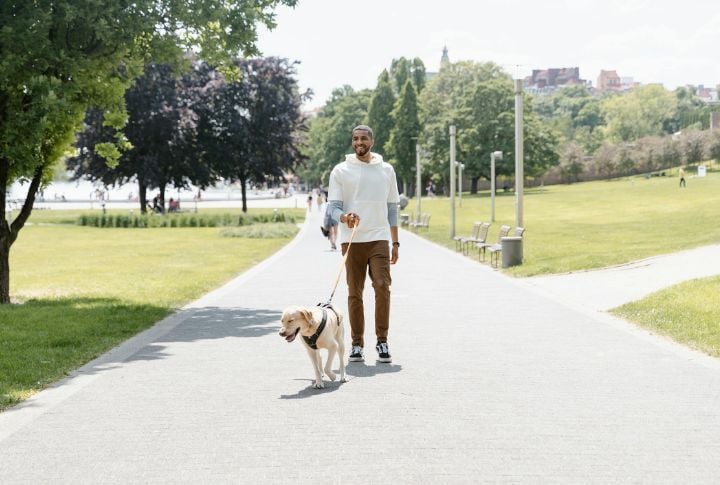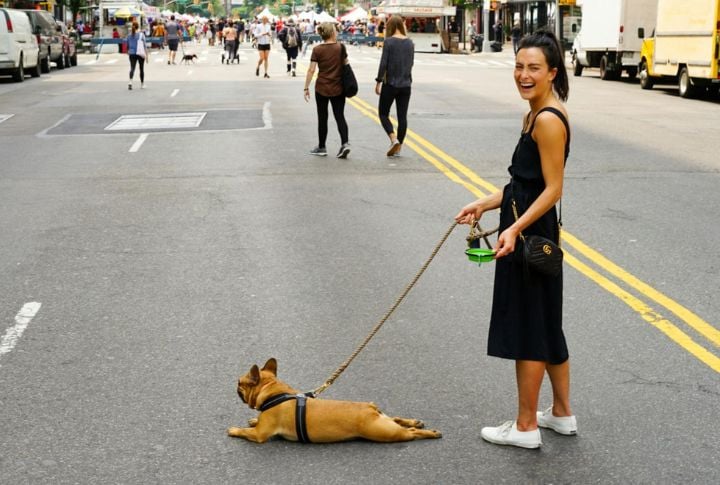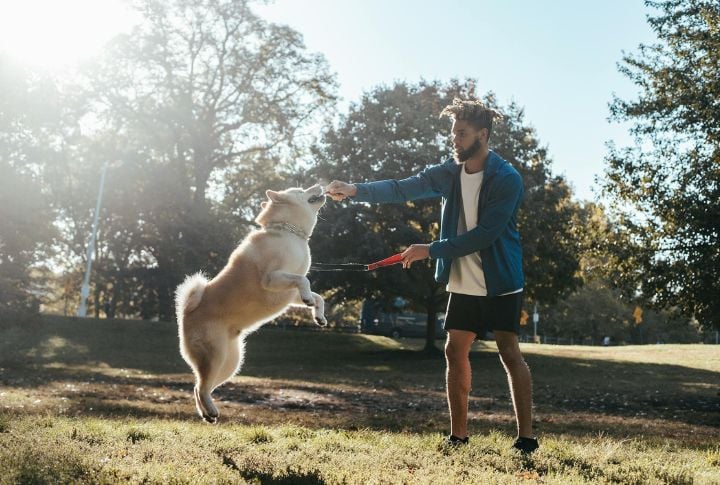15 Easy Steps To Train Your Dog To Walk On A Leash

Dogs need to learn leash walking, as they’re not born knowing how. If your walks are filled with pulling, stopping, or sniffing, it can be frustrating. However, the good news is that with patience and the right approach, your dog can learn to walk calmly by your side. Here are 15 simple ways to make it happen.
Choose And Use The Right Equipment

The first step to leash training your dog is getting gear that works with them, not against them. A harness, head collar, or standard 4-to-6-foot leash guides your dog without hurting them, especially if they pull a lot. Ditch retractable leashes that make pulling worse and are harder to control.
Start Somewhere With Low Distraction

Don’t jump straight into busy sidewalks or parks. Start training your pet in a quiet spot like your house or backyard, free from distractions. Let them focus on you and practice walking short distances. Once they get the hang of it, slowly work your way up to more crowded places.
Let Your Dog Get Used To The Leash And Harness

Before you start training, let your dog wear the leash and harness around the house so it feels normal. Let it drag on the ground while you play or chill together. That way, they’re not worked up or confused when it’s time to go for walks.
Use Positive Reinforcement And Reward Calm Walking

When your pet walks beside you without pulling, reward them with a treat, praise like “good job!” or a chance to sniff something. Dogs repeat what works, so clarify what gets them good stuff. Doing this makes walks more fun for them and easier for you.
Practice The “Stop And Wait” Technique

If your dog pulls, stop without taking another step. Stand still like a tree until the leash goes slack or the dog returns to your side. Then, you can keep walking to teach your pet that pulling isn’t okay. Be patient; this tip works with time.
Try The Circle Around Method

At other times, when your pet gets stubborn or distracted, you can gently guide them in a small circle around you and then continue walking. It helps your dog refocus and calm down without needing to stop. If they keep pulling, repeat until they understand what you’re trying to do.
Use The Back-Up Trick

In this trick, instead of letting your dog pull ahead, take a few steps backward. Your dog will follow, and when the leash loosens, reward it with praise or a treat. This method helps them understand that pulling gets them further from what they want, not closer.
Try A Longer Leash

Dogs love to sniff; longer leashes let them explore without constantly pulling. You can indulge them with a 12-foot leash to make them calmer. As mentioned earlier, never use retractable leashes because they stay tight. Rather, use a flat leash with a back-clip harness.
Use A Consistent Walking Route

Following the same route daily helps your dog feel secure and stay focused during walks. Familiar paths reduce surprise triggers and build walking skills with ease. After your dog gets comfortable and responds well, you can add new paths to keep things interesting.
Keep Training Sessions Short And Fun

Don’t train too long; start with 5 to 10 minutes at a time. Short sessions will help your dog stay focused and enjoy learning. Slowly increase the time as your dog improves, and always end on a positive note. That way, your dog looks forward to training instead of getting bored or overwhelmed.
Teach A “Heel” Or “Close” Command

You can also use commands to leash train your dog. Words such as “Heel” or “Close” would teach your canine to walk right beside you. You can start with a treat to guide them into position. Over time, your dog will associate staying close with treats and good things.
Teach A “Let’s Go” Cue

A clear cue like “Let’s go” tells your dog it’s time to move forward. Use it when they get distracted or stop walking. Pair it with a gentle tug and a treat once they follow. With repetition, this phrase becomes a helpful tool for keeping momentum on walks.
Redirect Before Lunging

If your dog’s about to lunge at something exciting, get their attention first. Say their name, ask for a “look at me,” or offer a treat. The goal is to catch them before they react. That’s one way to prevent pulling and teaches them to check in with you, even when distracted.
Be Consistent And Patient

React the same way each time so your dog learns what to expect. Consistency builds trust and understanding. If progress feels slow, stay calm and patient. Celebrate small wins—they add up over time and help your dog feel confident while learning new habits.
Get Professional Help If Needed

Sometimes, leash training can feel overwhelming. When that happens, you’re not alone. Remember that every canine learns differently, so reaching out for help is okay. Trainers can help with pulling, lunging, or anything else that stresses you out. Some offer private or group classes, and some even offer online support.






